Introduction— A Tribute to the Voices, Battles, and Broadcasts That Made WXYZ a Motor City '60s Legend From its earliest days as WGHP in 1925 t
Introduction— A Tribute to the Voices, Battles, and Broadcasts That Made WXYZ a Motor City ’60s Legend
From its earliest days as WGHP in 1925 to its transformation into WXYZ 1270, this Detroit radio station became more than a frequency—it became a cultural institution. WXYZ was the birthplace of The Lone Ranger, the home of Nightcall, and the battleground of Detroit’s Top 40 wars. It was where voices like Fred Wolf, Ed McKenzie, Dick Osgood, Johnny Slagle, Joel Sebastian, Paul Winter, Dave Prince, Marc Avery, and Lee Alan didn’t just speak—they resonated.
This USA Radio Museum presentation honors WXYZ’s rise, reign, and its enduring 1960s legacy. We explore the station’s pivotal role in shaping youth culture, its fierce competition with WJBK, CKLW and WKNR, and the creative brilliance that made “WIXIE 1270” a household name. At the heart of this tribute is Lee Alan—whose velvet voice, visionary leadership, and recent passing remind us of radio’s power to connect, comfort, and inspire.
Through rare stories, restored memories, and heartfelt reflections, we invite you to revisit the sound that shaped a generation—and to celebrate the legacy of a station that never stopped believing in the magic of radio. — USA RADIO MUSEUM
_____________________
The Birthplace of Legends
Detroit’s WXYZ and the Dawn of Radio Mythology
 In the 1930s and ’40s, WXYZ emerged as more than a Detroit radio station—it became a national creative powerhouse. Broadcasting from its annex studios in the Mendelson Building on East Jefferson Avenue, WXYZ gave rise to some of the most iconic serials in American radio history. The Lone Ranger, created by George W. Trendle and Fran Striker, thundered into the hearts of millions with Brace Beemer’s commanding voice and the gallop of Hi-Yo Silver, becoming a symbol of justice and frontier heroism. The Green Hornet, another Trendle-Striker creation, brought a noir edge to the airwaves with its masked vigilante and the unforgettable sting of Flight of the Bumblebee. And Challenge of the Yukon, set in the Canadian wilderness, followed Sergeant Preston and his loyal dog Yukon King through snowbound adventures that captivated listeners with their emotional depth and rugged drama.
In the 1930s and ’40s, WXYZ emerged as more than a Detroit radio station—it became a national creative powerhouse. Broadcasting from its annex studios in the Mendelson Building on East Jefferson Avenue, WXYZ gave rise to some of the most iconic serials in American radio history. The Lone Ranger, created by George W. Trendle and Fran Striker, thundered into the hearts of millions with Brace Beemer’s commanding voice and the gallop of Hi-Yo Silver, becoming a symbol of justice and frontier heroism. The Green Hornet, another Trendle-Striker creation, brought a noir edge to the airwaves with its masked vigilante and the unforgettable sting of Flight of the Bumblebee. And Challenge of the Yukon, set in the Canadian wilderness, followed Sergeant Preston and his loyal dog Yukon King through snowbound adventures that captivated listeners with their emotional depth and rugged drama.
These weren’t just programs—they were mythologies, crafted in Detroit and broadcast to the world, shaping the imaginations of a generation and establishing WXYZ as a storytelling powerhouse. But WXYZ’s innovation didn’t stop at drama. Eddie Chase’s Make Believe Ballroom brought elegance and enchantment to the airwaves, blending big band swing with smooth narration and offering a glamorous escape into the world of jazz and romance. Meanwhile, Brace Beemer’s portrayal of the Lone Ranger became so iconic that many listeners believed he was the character, his deep baritone and moral clarity elevating radio acting to an art form.
At a time when New York and Chicago dominated network radio, WXYZ helped Detroit carve out its own identity as a creative capital. The Mendelson Building buzzed with writers, engineers, and performers crafting immersive soundscapes with cinematic ambition. Foley artists conjured galloping horses and howling winds, while actors delivered performances with theatrical precision. Today, the legacy of this era lives on in archives, fan communities, and museum exhibits. The Lone Ranger remains a symbol of radio’s golden age, and WXYZ’s contributions to American media are finally receiving their due. This chapter reminds us that radio was never just sound—it was storytelling, community, and imagination. And in the heart of Detroit, legends were born.
The ABC Era and the Rise of Personality
From Network Prestige to Local Stardom—WXYZ’s Postwar Renaissance

Jack Surrell, Paul Winter, Ed McKenzie, Micky Shorr, Fred Wolf, Johnny Slagle. WXYZ Radio personalities in December 1956.
In 1946, WXYZ entered a new era when it was acquired by the American Broadcasting Company (ABC), becoming a flagship affiliate and placing Detroit firmly on the national broadcasting map. The postwar years brought a surge of optimism and innovation, and WXYZ responded with a dynamic blend of national programming and local personality. Listeners tuned in for ABC staples like The Adventures of Ozzie and Harriet, Meet Corliss Archer, and Big Time Boxing, but what truly set WXYZ apart was its ability to localize the national—offering Detroiters not just syndicated content, but voices they trusted and loved.
Among them was Johnny Slagle, a WXYZ veteran since 1935 who returned in 1947 after a stint in New York. With his calm authority and Midwestern warmth, Slagle became a fixture in Detroit homes, guiding listeners through news, commentary, and music with grace and familiarity. If Slagle was the gentleman broadcaster, then Ed McKenzie was the rebel innovator. Previously known as “Jack the Bellboy” at WJBK, McKenzie revolutionized radio by blending humor, hipness, and hit records into a fast-paced, irreverent format that prefigured the modern disc jockey. His show was a prototype of Top 40 radio before the term even existed.
McKenzie’s influence extended beyond the mic. He was a television personality, a radio mentor to many, and a cultural icon—especially among younger listeners. But in 1959, he left WXYZ in protest of the station’s adoption of “Formula Radio,” a Top 40 format that restricted DJs from choosing their own music. Introduced in 1958, the format was defended by WXYZ vice president Hal Neal as “a step forward,” but for McKenzie, it marked the end of creative freedom. Still, his legacy endured. He helped redefine radio not just as a medium for scripted shows, but as a platform for personality, spontaneity, and musical discovery.
Reinvention and the Top 40 Revolution
WXYZ’s Leap into Youth Culture and the Sound of a New Era
By the mid-1950s, WXYZ stood at a crossroads. The golden age of radio drama was fading fast, eclipsed by television and shifting audience tastes. Families were turning to screens, while younger listeners—restless and rhythm-driven—were tuning in for music, not monologues. Radio needed reinvention, and WXYZ was ready to lead the charge.
Under the guidance of ABC and local management, the station began a bold transformation. Legacy programs were phased out, replaced by a contemporary, youth-oriented sound. Jazz, pop, and early rock ’n’ roll filled the airwaves, curated by a new generation of disc jockeys who weren’t just announcers—they were stars. By 1958, WXYZ had fully embraced the Top 40 format, then known as “Formula Radio.” DJs followed a strict playlist drawn from national charts and local sales, sacrificing personal selection for consistency and momentum. It was a controversial shift, but one that paid off—WXYZ became the first ABC-owned station to adopt the format, and ratings soared.
The new sound was sleek and magnetic, powered by voices like Paul Winter, whose cool demeanor made him a trusted companion for Detroit teens; Mickey Shorr, whose smooth delivery and sharp wit made him a cultural connector—until his controversial departure in 1959 amid payola accusations he denied; and Jack Sorrell, whose Top of the Town introduced jazz to a broader audience with style and sophistication. These DJs didn’t just play records—they shaped taste, built community, and became part of Detroit’s daily rhythm.
Beyond the studio, WXYZ became a hub for youth culture, sponsoring dances, concerts, and live broadcasts from venues like Walled Lake Casino and Club 182. These weren’t just promotional events—they were cultural rituals, where music, fashion, and identity converged. WXYZ wasn’t just a station—it was a scene, a movement, and a mirror of Detroit’s emerging youth voice.
The Top 40 revolution gave WXYZ a new identity—modern, magnetic, and deeply connected to its audience. It positioned the station as a leader in format innovation and cultural relevance, paving the way for future legends like Lee Alan, Fred Wolf, and Joel Sebastian. This chapter wasn’t just about survival—it was about vision, courage, and the belief that radio could still lead the way. And in Detroit, WXYZ proved it could.
The WIXIE Drive and the Battle for Detroit
WXYZ’s Top 40 Vanguard and the Fight for Motor City’s Youth
 As the 1960s dawned, WXYZ had transformed into a full-fledged Top 40 powerhouse. From morning to midnight, the station pulsed with music, personality, and momentum—capturing the imagination of Detroit’s youth and setting the pace for a new cultural era.
As the 1960s dawned, WXYZ had transformed into a full-fledged Top 40 powerhouse. From morning to midnight, the station pulsed with music, personality, and momentum—capturing the imagination of Detroit’s youth and setting the pace for a new cultural era.
Veteran morning man Fred Wolf anchored the day with warmth and familiarity. A holdover from WXYZ’s earlier traditions, Wolf resisted the shift toward rock acts like The Beatles and The Rolling Stones, preferring the standards and playlist norms that had defined his career. By late summer 1965, he was subtly forced to exit the station, marking the end of an era. Yet his legacy endured—not only as a beloved broadcaster, but as a respected ABC-TV commentator who once covered national bowling championships.
Joel Sebastian, WXYZ’s charismatic afternoon host, helped define the station’s early Top 40 sound. With smooth delivery and sharp wit, he kept Detroit moving through traffic and twilight. His departure for WLS in Chicago in 1964 was a major loss, but his influence lingered—Sebastian had helped shape WXYZ’s identity as a personality-driven station.
Paul Winter brought intellect and charm to the midday hours. Born Saul Wineman, he held degrees in philosophy and taught humanities at Wayne State University. His broadcasts blended laid-back delivery with original skits and thoughtful commentary, making him a rare figure in American radio: the professor behind the mic.
Steve Lundy followed with energy and enthusiasm, keeping the station’s rhythm alive through early afternoons. Though he later moved to an ABC station in San Francisco, Lundy was a key player in WXYZ’s WIXIE drive.
And then came Lee Alan.
Alan’s Nightcall wasn’t just a show—it was a mood. Blending romance, reflection, and rhythm, he spoke directly to listeners in a tone that felt intimate and poetic. In 1963, he commanded a staggering 40% share of the evening audience. His voice—warm, confident, and unmistakably Detroit—became the soundtrack of a generation. Alan was more than a DJ; he was a storyteller, a mood-setter, and eventually, the station’s Program Director.
Dave Prince added polish and professionalism to the afternoon and early evening slots. Known for smooth transitions and impeccable timing, Prince was a steady presence whose understated style earned deep appreciation from listeners and colleagues alike.
By 1964, WXYZ had rebranded as “WIXIE 1270,” a name that became synonymous with Detroit’s Top 40 culture. The station’s Sound Survey was a coveted chart, its jingles were bright and unforgettable, and its promotions and live broadcasts kept WXYZ front and center in teen life.
But competition was fierce. WJBK remained a contender. CKLW, with its powerful signal and cross-border reach, was gaining ground. And in late 1963, WKNR—“Keener 13”—burst onto the scene with a leaner playlist and stripped-down format that quickly captured younger listeners. By 1964, WXYZ was locked in a three-way battle for dominance.
To stay competitive, WXYZ hired Marc Avery, a standout from WJBK Radio 1500. Known for his engaging style and ability to connect with both teens and adults, Avery replaced Fred Wolf in the morning slot in 1965. He delivered, anchoring the day with professionalism and charm, and helping WXYZ hold its ground in a volatile ratings war.
Together, this ensemble—Wolf, Sebastian, Winter, Lundy, Alan, Prince, Murphy, Avery—formed the backbone of WXYZ’s Top 40 legacy. They weren’t just broadcasters. They were personalities. They were Detroit. And for a time, they made WXYZ the most exciting station on the dial.
The Ratings War and the Network Dilemma
WXYZ’s Battle for Relevance in a Changing Radio Landscape
By 1965, WXYZ’s once-dominant position was slipping. Though the station still boasted strong talent and a loyal audience, its hybrid format—part local disc jockeys, part ABC network programming—was becoming a liability. As youth-driven, music-intensive radio surged, WXYZ found itself caught between tradition and transformation.
WJBK Radio 1500, once a competitor going against WXYZ on the dial during 1962-1963 (and early in 1964) bowed from the Top 40 fray in August 1964. While rivals like WKNR and CKLW embraced streamlined, all-music and Top 40 formats with relentless energy, WXYZ remained tethered to legacy content. Programs like Don McNeill’s Breakfast Club and Assignment: The World occupied prime hours, limiting the station’s ability to deliver the nonstop hits and personality-driven programming younger listeners craved. The tension between network obligation and local innovation became a defining challenge. WXYZ’s talent was undeniable, but airtime was constrained, and the station’s split identity was beginning to show.
In Billboard’s July 1965 ratings, WKNR led with a commanding 44% share, CKLW followed with 34%, and WXYZ had slipped to third with 22%. Yet there were bright spots—Marc Avery’s mid-morning show beat Robin Seymour at WKNR, proving that WXYZ’s voices could still draw a crowd.
Behind the scenes, Lee Alan—soon to become Program Director—pushed for a full break from network programming. He envisioned a station built on music, personality, and local engagement, capable of competing head-to-head with Keener and CKLW by amplifying WXYZ’s own strengths. But ABC executives in New York were reluctant to relinquish control. WXYZ was a flagship affiliate, and the idea of dropping long-running shows like Breakfast Club was unthinkable to some in the corporate hierarchy.
This created a philosophical divide: Alan and local leadership wanted autonomy and relevance, while the network prioritized tradition and centralized control. The result was a stalemate—one that hampered WXYZ’s ability to evolve with the times.
The ratings war of 1965 wasn’t just about numbers—it was about identity. WXYZ remained rich in talent and emotional resonance, but unless it could resolve its network dilemma, it risked becoming a relic in a rapidly modernizing market. This chapter marked the beginning of WXYZ’s final push to reclaim its place atop Detroit radio, and the decisions made during these months would shape its future for years to come.
The Final Push
Lee Alan’s Last Stand and the Battle for Detroit’s Airwaves
Inside Broadcast House, the energy was palpable. The DJs were sharp, the branding was bold, and the music was hot. For a moment, WXYZ felt reborn. But by mid-1966, the ratings told a sobering story: the station had only climbed from 22% to 24%, while CKLW and WKNR continued to dominate. Despite the creative overhaul, WXYZ remained stuck in third place.
The biggest obstacle was ABC’s mandated network programming. Shows like Don McNeill’s Breakfast Club still occupied prime hours, limiting WXYZ’s ability to deliver uninterrupted music and personality. Alan had long urged ABC to drop the network content, calling it a death knell for local relevance—but his pleas went unanswered.
And later, to add more consternation (according to Alan’s ‘Turn Your Radio On’) came Bill Drake.
Drake’s arrival at CKLW eventually transformed the station into “The Big 8,” a streamlined, hit-driven juggernaut built on the very principles Alan had championed. But by the time CKLW embraced the model, WXYZ’s window for reinvention had closed. In hindsight, Drake’s success validated Alan’s vision—but also sealed WXYZ’s fate.
The station’s final push in 1966 was a masterclass in creativity and courage, bringing together some of Detroit’s finest radio talent. But structural limitations—network mandates, delayed reform, and fierce competition—proved insurmountable. By January 1967, WXYZ abandoned its Top 40 format and rebranded as “Sound Of The Good Life,” shifting toward adult contemporary. This wasn’t just the end of a format—it was the end of an era. And for those who lived it, worked it, and felt it, WXYZ’s final push remains a poignant memory of what might have been.Chapter Seven: The Curtain Falls
By January 1967, the pulse of WXYZ’s Top 40 era had begun to fade. The station that once electrified Detroit with its hit-driven energy, iconic voices, and cultural influence was undergoing a quiet but profound transformation. The signs had been there for months—ratings stagnation, internal frustration, and the looming shadow of competitors like CKLW and WKNR. But now, the shift was official.
Lee Alan, the velvet-voiced architect of WXYZ’s nighttime dominance and its final creative push, had resigned. His tenure as Program Director—marked by bold hires, revived Sound Surveys, and the “Personality Plus” jingle campaign—had been passionate and visionary. But even Alan’s charisma and strategic instincts couldn’t overcome the structural limitations imposed by ABC’s network programming mandates. The refusal to drop legacy shows like Don McNeill’s Breakfast Club had stifled momentum, and the station’s pleas for autonomy had fallen on deaf ears in New York.
In his memoir Turn Your Radio On, Alan reflected on the moment with bittersweet clarity:
His departure (Lee Alan’s) marked more than a personnel change—it was the symbolic end of WXYZ’s fight to remain a Top 40 contender.
 Joe Bacarella, PD at WCAR, was appointed as the new WXYZ Program Director. Bacarella, a respected figure in Detroit radio, was tasked with steering the station into a new era. The format was rebranded as “Sound Of The Good Life,” a pivot toward adult contemporary programming that emphasized softer music, lifestyle features, and a more relaxed tone. Gone were the high-energy jingles, the chart countdowns, and the teenage dance promotions. In their place came a sound tailored to older, more affluent listeners—those who had grown up with WXYZ but were now seeking something calmer, more refined.
Joe Bacarella, PD at WCAR, was appointed as the new WXYZ Program Director. Bacarella, a respected figure in Detroit radio, was tasked with steering the station into a new era. The format was rebranded as “Sound Of The Good Life,” a pivot toward adult contemporary programming that emphasized softer music, lifestyle features, and a more relaxed tone. Gone were the high-energy jingles, the chart countdowns, and the teenage dance promotions. In their place came a sound tailored to older, more affluent listeners—those who had grown up with WXYZ but were now seeking something calmer, more refined.
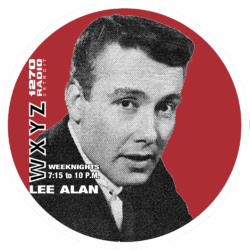 For many longtime fans, the change felt like a quiet surrender. The station that had once defined youth culture in Detroit was now stepping away from the very audience it had cultivated. The DJs who had been the voices of a generation—Marc Avery, Lee Alan, Steve Lundy, Dave Prince, Pat Murphy, and Jim Hampton—faced a new reality. Some adapted. Others moved on.
For many longtime fans, the change felt like a quiet surrender. The station that had once defined youth culture in Detroit was now stepping away from the very audience it had cultivated. The DJs who had been the voices of a generation—Marc Avery, Lee Alan, Steve Lundy, Dave Prince, Pat Murphy, and Jim Hampton—faced a new reality. Some adapted. Others moved on.
The rebranding to “Sound Of The Good Life” was not without merit. It reflected broader trends in radio, where stations were segmenting audiences and chasing advertiser-friendly demographics. But for those who had danced to WXYZ’s hits, called into its contests, and grown up with its voices, the change felt like the closing of a door.
And so, by the end of January 1967, the Top 40 dream at WXYZ was officially over.
No more “WIXIE” jingles.
No more Sound Surveys.
No more battle for the crown.
What remained was memory—vivid, emotional, and enduring. The end of a Detroit Top 40 broadcasting legend. The end of an era.
_____________________
Dick Marx Productions (Chicago) | WXYZ (1966) | ‘Personality Plus’ | The Anita Kerr Singers
Audio Digitally Remastered by USA Radio Museum
_____________________
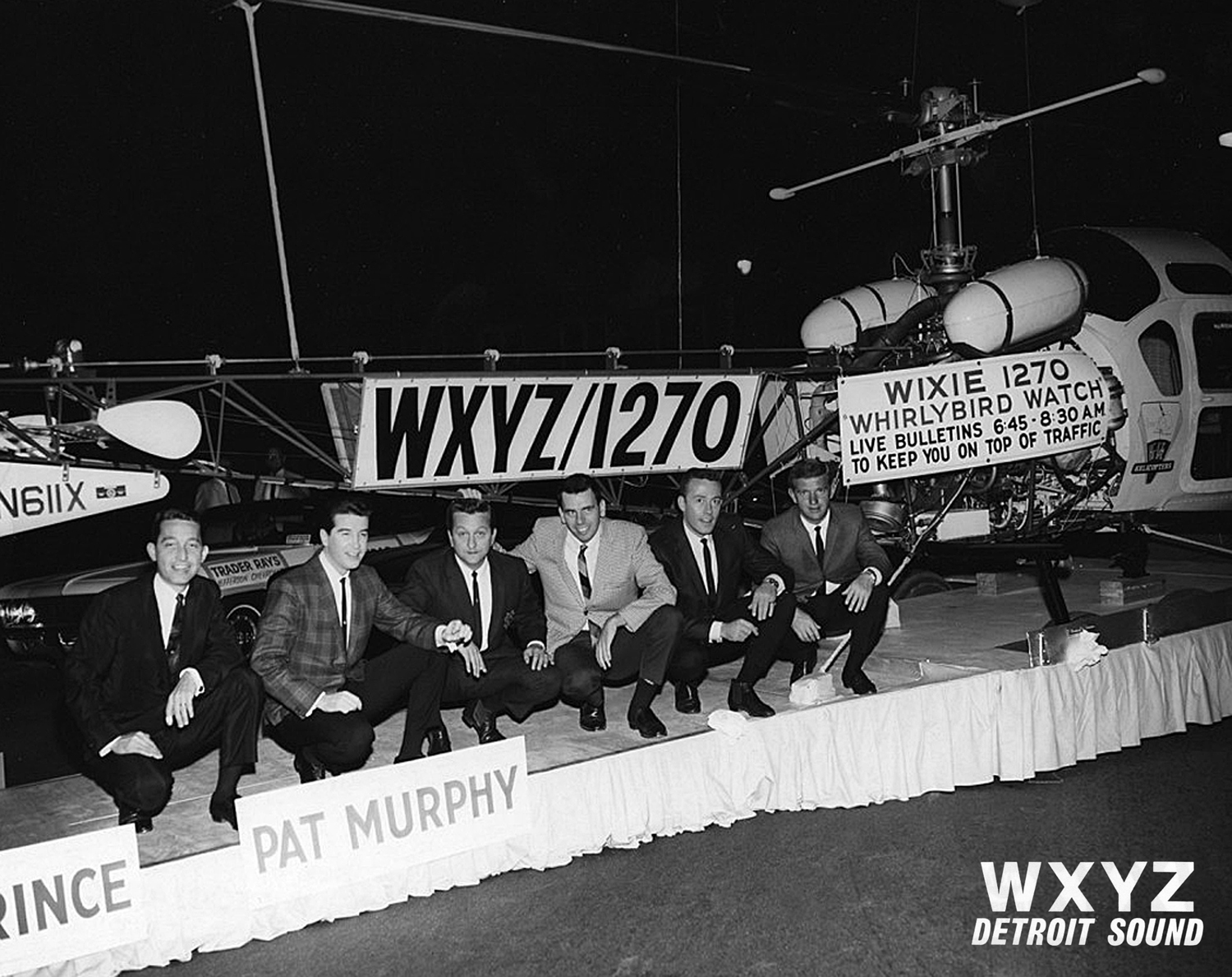
WXYZ 1270 Personality Plus DJs: Dave Prince, Danny Taylor, Pat Murphy, Jim Hampton, Lee Alan, and Marc Avery. (Credit: Jim Hampton)
_____________________
Interlude: Jim Hampton and the Final Hours of WXYZ Top 40
A Changing of the Guard and the End of an Era
 In April 1966, newly-appointed WXYZ Program Director Lee Alan—himself a legendary voice and visionary leader—made another strategic hire. He brought in Jim Hampton, a rising radio talent with a deep love for music, storytelling, and sonic atmosphere. As Jim Taylor on WAMM in Flint, Mi., Hampton was selected specifically to take over the all-night shift on Radio 1270, stepping into the role and joining a lineup that included Lee Alan, Marc Avery, Steve Lundy, Dave Prince, Danny Taylor, and Pat Murphy.
In April 1966, newly-appointed WXYZ Program Director Lee Alan—himself a legendary voice and visionary leader—made another strategic hire. He brought in Jim Hampton, a rising radio talent with a deep love for music, storytelling, and sonic atmosphere. As Jim Taylor on WAMM in Flint, Mi., Hampton was selected specifically to take over the all-night shift on Radio 1270, stepping into the role and joining a lineup that included Lee Alan, Marc Avery, Steve Lundy, Dave Prince, Danny Taylor, and Pat Murphy.
Hampton was hired to replace Bobby Day on the all-night shift, bringing in a youthful personality that was Detroit born and knowledgeable of the Detroit music scene.
Hampton’s arrival coincided with a flurry of creative energy. WXYZ had just launched its “Personality Plus” jingle package, revived the Detroit Sound Surveys, and recruited Joey Reynolds from Cleveland to inject fresh personality into the lineup. Inside Broadcast House, the vibe was electric—hopeful, determined, and full of heart. Lee Alan’s team was mounting what would be WXYZ’s final great push to reclaim Top 40 dominance.
But fate had other plans.
In late-December of that year, Hampton was called up to basic training with the US Army Reserves. When he returned to WXYZ in January 1967, the station he had left behind was no longer the same. The Top 40 format had been abandoned, replaced by a new branding: “Sound Of The Good Life.” This shift toward adult contemporary programming signaled a broader retreat from youth culture, and the vibrant energy that had defined WXYZ’s heyday was fading.
On his return from active duty, Hampton joined WXYZ-FM as the nighttime personality for the required 6 months while Johnny Randall officially replaced him on WXYZ AM. The magic was gone. The station’s identity had changed, and so had its mission.
His departure marked more than a personal transition—it symbolized the end of an era. Hampton had been part of WXYZ’s final chapter as a Top 40 giant, and his story remains a vital thread in the tapestry of Detroit radio history.
A USARM Note: Today, Jim Hampton continues to preserve radio’s legacy as co-publisher of the USA Radio Museum, alongside fellow curator Jim Feliciano. Together, they honor the voices, stations, and stories that shaped American broadcasting—ensuring that WXYZ’s spirit lives on.
_____________________
Lee Alan: “On the Horn” and Forever in Our Hearts
A Tribute to Detroit’s Velvet Voice
On October 29, 2024, the city of Detroit—and the world of radio—lost one of its most iconic voices. Lee Alan, the velvet-toned broadcaster who defined an era on WXYZ 1270, passed away in Florida due to complications from multiple strokes. He was 89 years old, just days shy of his 90th birthday on November 5.
Lee Alan wasn’t just a disc jockey. He was a storyteller, a mentor, a pioneer, and a cultural force. His voice was the soundtrack of Detroit’s youth in the 1960s, and his influence extended far beyond the airwaves.
A Detroit Original
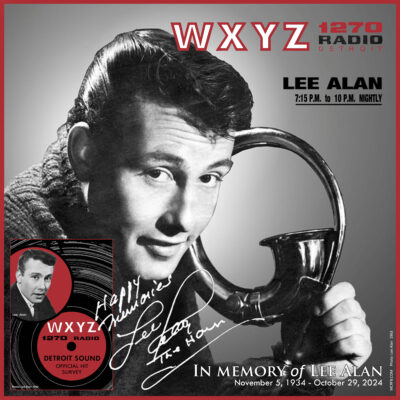 Born in 1934, Lee Alan grew up in Detroit, where his love for broadcasting was sparked at age 14 while listening to WXYZ’s legendary serial The Lone Ranger. After graduating from Cooley High School, he pursued broadcasting studies at Wayne State University, laying the foundation for a career that would span decades and touch millions.
Born in 1934, Lee Alan grew up in Detroit, where his love for broadcasting was sparked at age 14 while listening to WXYZ’s legendary serial The Lone Ranger. After graduating from Cooley High School, he pursued broadcasting studies at Wayne State University, laying the foundation for a career that would span decades and touch millions.
Alan’s radio journey began at WCAR in Pontiac, followed by a stint at WJLB, where he worked overnight shifts. After a brief period of military service, he returned to WJLB before landing the all-night slot at WJBK in 1959. Though his time there ended due to “simple economics,” it was only the beginning.
He moved to WKMH, hosting two programs and building a loyal following. In 1962, Alan relocated to WCPO in Cincinnati—but just days after arriving, he received a call from WXYZ. The station that had once inspired him now wanted him back.
He returned to Detroit, and history was made.
Nightcall and the WXYZ Era
Alan’s evening show Nightcall became a phenomenon. Blending romance, rhythm, and reflection, he created an intimate listening experience that resonated deeply with Detroit audiences. His voice—warm, confident, and unmistakably Detroit—commanded a staggering 40% share of the nighttime audience in a 1963 Hooper survey.
He also made his mark on television, hosting “Club 1270” in 1963 and later “The Swingin’ Kind” in 1966 on WXYZ-TV. His presence on both radio and television made him a multimedia personality and a household name.Alan also revived the Detroit Sound Surveys, a beloved local chart that reflected record sales across metro Detroit. These surveys were distributed to retail outlets and gave listeners a tangible connection to the music they heard on-air.
Most notably, Alan commissioned a new jingle package—“Personality Plus”—written and produced by Dick Marx in Chicago and performed by the legendary Anita Kerr Singers. The jingles were lush, melodic, and modern, designed to give WXYZ a sonic signature that matched its new ambition.
But despite his efforts, WXYZ’s battle for ratings was hampered by ABC’s insistence on retaining network programming. Alan’s pleas for a full music format were denied, and by January 1967, the Top 40 dream was over. By February, Alan exited the station, and ABC-owned WXYZ was rebranded as “Sound Of The Good Life.”
Moments That Echo
Lee Alan’s career was filled with unforgettable moments:
- In 1960, while at WKMH, he delivered his most enduring broadcast: “The Letter from Michael,” a Christmas narrative that touched hearts and became a Detroit tradition.
- In October 1963, Alan played a pivotal role in securing Chuck Berry’s first post-incarceration gig at the Walled Lake Casino.
- In February 1964, he conducted a one-on-one interview with The Beatles in Miami, capturing a moment of pop culture history.
- In May 1964, he produced and recorded the charity single “Set Me Free” to benefit the YMCA, featuring backup vocals from Martha Reeves and the Vandellas.
- In the early 1990s, his patriotic radio special The Americans was syndicated on over 1,000 stations, including the Armed Forces Radio Network in 80 countries.
A Voice That Never Left
When Alan retired from radio in 1970, his voice continued to resonate. He founded his own advertising agency and became one of the most recognizable voices in automotive commercials, heard across Detroit and the nation for decades.
He also became a pioneer in audiobook production, narrating over 1,000 titles, and in 2002, he published a memoir, Turn Your Radio On, chronicling his extraordinary broadcasting career in the Motor City.
A Mentor Remembered
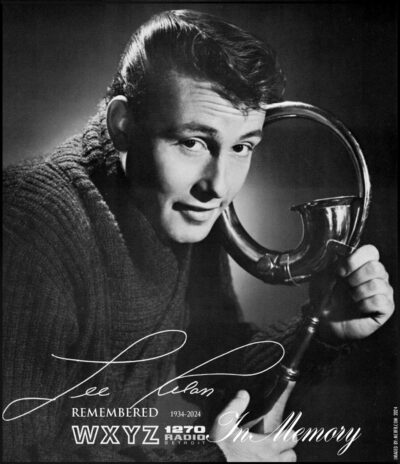 In a heartfelt tribute, WXYZ alumnus Jim Hampton shared:
In a heartfelt tribute, WXYZ alumnus Jim Hampton shared:
“Though he had offers to leave Detroit, Lee chose to remain in the city he loved. After moving to Florida, he became a pioneer in audiobook production… On a personal note, Lee was a mentor of mine. He took a chance on a 19-year-old DJ and gave me an on-air slot at WXYZ Radio. I will never forget that gesture.”
“Lee Alan’s legacy is one of passion, innovation, and dedication to his craft and his community. His voice, energy, and contributions to Detroit’s cultural fabric will be lovingly remembered and cherished by many who remember him as Lee Alan, ‘On the Horn.’”
His Legacy Preserved
Lee Alan’s passing marks the end of an era—but his legacy lives on in every listener who felt seen, heard, and understood through his broadcasts. At the USA Radio Museum, we honor his life not only through the memories he left on Detroit radio, but through the way young Detroiters in the 1960s felt about him—how they listened, connected, and carried his voice in their hearts.
Because Lee Alan wasn’t just a broadcaster.
He was Detroit’s most beloved teen voice—a companion, a confidant, a sound of their lives.
And though that voice has been stilled,
his name and his sound will remain forever synonymous with the legacy of Detroit radio. For all time.
_____________________
Contact: jimf.usaradiomuseum@gmail.com
_____________________
A USARM Viewing Tip: On your PC? Mouse/click over each image for expanded views. On your mobile or tablet device? Finger-tap all the above images inside the post and stretch image across your device’s screen for LARGEST digitized view. Then click your brower’s back arrow to return to the featured post.
© 2025 USA Radio Museum. All rights reserved.

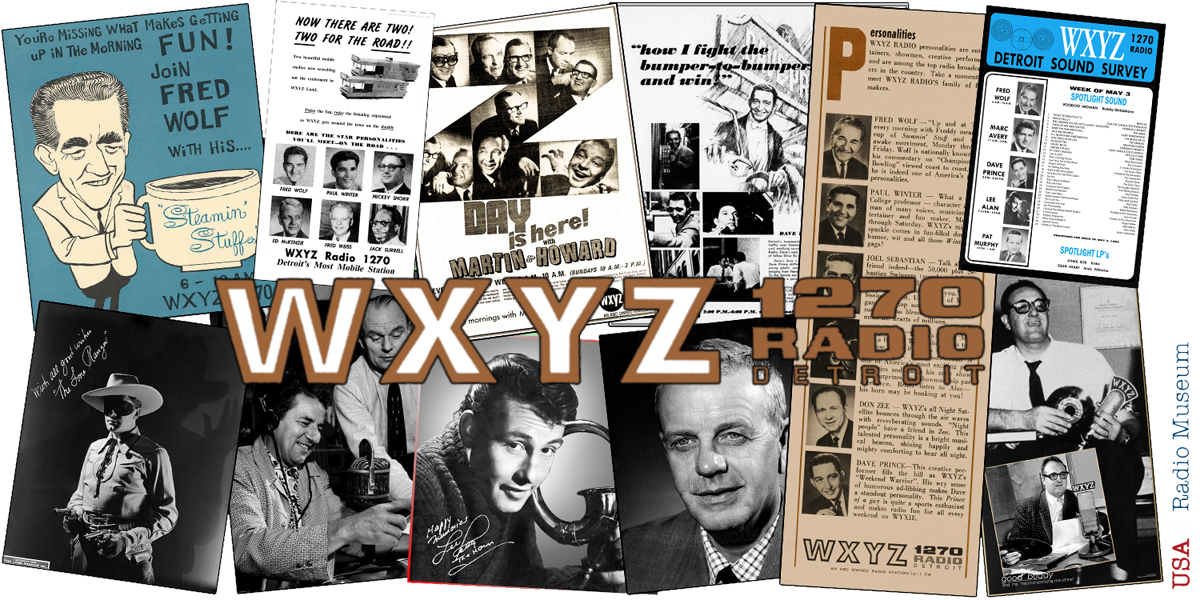
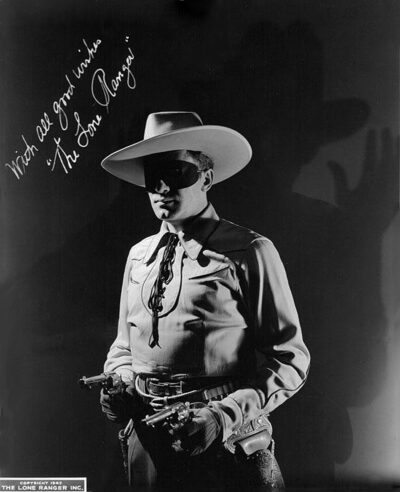
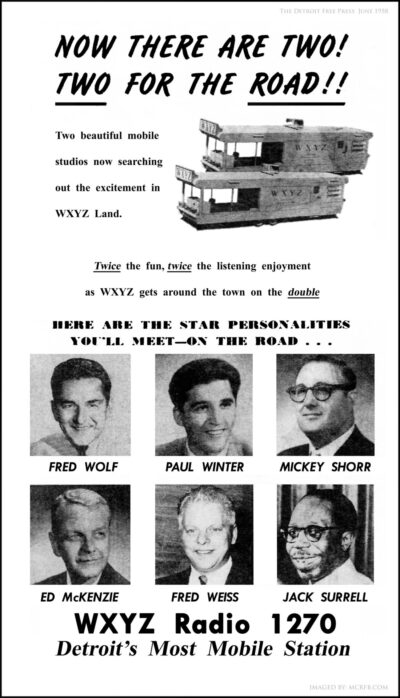


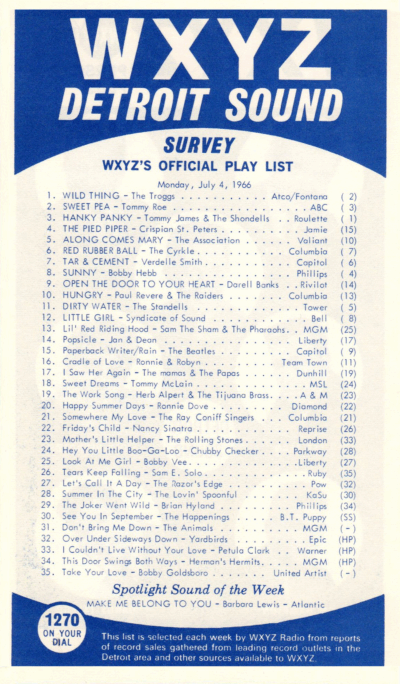


It makes sense but what the guys at WXYZ-AM and the people at WXYZ-TV didn’t know that a new FM station would come and changed Detroit radio forever, that new FM station is the legendary, iconic, quirky, controversial, outrageous, maniacal, and…………….As Toni Storm: “TIMELESS!” rock, metal, and alternative creature itself WRIF 1O1 FM A.K.A. The Wicked Riff!
What was not said was that WXYZ was able to transition to the Adult Contemporary format rather nicely, with talented jocks such as the legendary Dick Purtan, Johnny Randall, Mike Sherman/Tom Shannon, Jack Hayes, Dave Lockhart, and Jim Davis. As with all stations, there were a few personnel changes, but that format, led by Purtan, lasted for 10 years, keeping WXYZ secure in the middle of the overall ratings, until news-talk took over. So, in my opinión, WXYZ retained it’s legendary status all the way until 1978.
Subject: Reflecting on WXYZ’s Transition in January 1967
Steve Brown,
Your reflections add valuable context to WXYZ’s post-Top 40 journey.
You’re absolutely right that the station transitioned into Adult Contemporary with remarkable grace, thanks to the talents of Dick Purtan, Johnny Randall, Mike Sherman/Tom Shannon, Jack Hayes, Dave Lockhart, Jim Davis, and others.
That era deserves its own spotlight, and we deeply appreciate your reminder of how WXYZ continued to resonate with Detroit listeners well into the 1970s.
Our recent post focused specifically on WXYZ’s origins and its Top 40 reign throughout the 1950s and 1960s, culminating in the format shift at the start of 1967—the official end of its Top 40 era
But the legacy didn’t end there—and your comment helps illuminate the next chapter. WXYZ’s ability to evolve while retaining its identity is part of what makes its story so enduring.
Thanks again for sharing your perspective. We welcome it—and we’re grateful for your passion for Detroit radio history.
With appreciation,
Jim Feliciano
USA Radio Museum
Preserving the Soundtrack of Our Lives
Love there jgls ty xyz